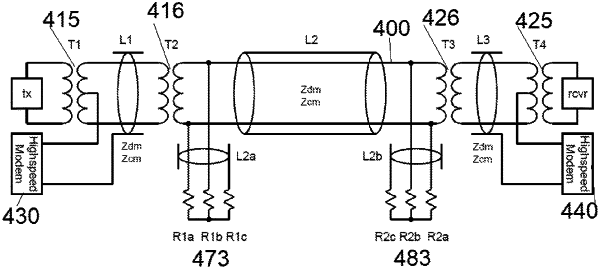| CPC G06F 13/36 (2013.01) [G06F 2213/40 (2013.01)] | 20 Claims |

|
1. A system comprising:
a legacy bus communicatively coupled to a transmitter and a receiver via one or more transformer couplers, wherein the transmitter and receiver transmit and receive a first signal, wherein the first signal is a legacy baseband signal transmitted over the legacy bus utilizing a differential mode; and
at least two modems, wherein a first modem of the at least two modems is coupled to a first location on the legacy bus and wherein a second modem of the at least two modems is coupled to a second location on the bus, wherein the first modem transmits a second signal over the legacy bus for receipt by the second modem, wherein the second signal is a high-rate data signal, wherein the at least two modems are coupled to the legacy bus via the one or more transformer couplers, wherein the second signal is transmitted over the legacy bus utilizing a common mode, and wherein the first signal and the second signal are spatially separated on the legacy bus during transmission over the legacy bus based on an isolation between the common mode and the differential mode, wherein the separation between the common mode and the differential mode when the first signal and the second signal are transmitted over the legacy bus is based on an orthogonality between the common mode and the differential mode, wherein the first signal and the second signal are low frequency signals.
|